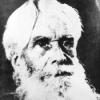Havelock Ellis

Havelock Ellis
Henry Havelock Ellis, known as Havelock Ellis, was an English physician, writer, progressive intellectual and social reformer who studied human sexuality. He was co-author of the first medical textbook in English on homosexuality in 1897, and also published works on a variety of sexual practices and inclinations, as well as transgender psychology. He is credited with introducing the notions of narcissism and autoeroticism, later adopted by psychoanalysis. He served as president of the Galton Institute and, like many intellectuals of...
NationalityBritish
ProfessionPsychologist
Date of Birth2 February 1859
Dancing and building are the two primary and essential arts. The art of dancing stands at the source of all the arts that expressthemselves first in the human person. The art of building, or architecture, is the beginning of all the arts that lie outside the person; and in the end they unite. Music, acting, poetry proceed in the one mighty stream; sculpture, painting, all the arts of design, in the other. There is no primary art outside these two arts, for their origin is far earlier than man himself; and dancing came first.
It has always been difficult for Man to realize that his life is all an art. It has been more difficult to conceive it so than to act it so. For that is always how he has more or less acted it.
It is here [in mathematics] that the artist has the fullest scope of his imagination.
The art of dancing stands at the source of all the arts that express themselves first in the human person. The art of building, or architecture, is the beginning of all the arts that lie outside the person; and in the end they unite.
Einstein is notmerely an artist in his moments of leisure and play, as a great statesman may play golf or a great soldier grow orchids. He retains the same attitude in the whole of his work. He traces science to its roots in emotion, which is exactly where art is also rooted.
Greek is the embodiment of the fluent speech that runs or soars, the speech of a people which could not help giving winged feet toits god of art. Latin is the embodiment of the weighty and concentrated speech which is hammered and pressed and polished into the shape of its perfection, as the ethically minded Romans believed that the soul also should be wrought.
Dancing as an art, we may be sure, cannot die out, but will always be undergoing a rebirth. Not merely as an art, but also as a social custom, it perpetually emerges afresh from the soul of the people.
Here, where we reach the sphere of mathematics, we are among processes which seem to some the most inhuman of all human activities and the most remote from poetry. Yet it is here that the artist has the fullest scope of his imagination.
Every artist writes his own autobiography.
To live remains an art which everyone must learn, and which no one can teach.
Life is livable because we know that whatever we go most of the people we meet will be restrained in their actions towards us by an almost instinctive network of taboos
The place where optimism flourishes most is the lunatic asylum
What we call "Progress"is the exchange of one nuisance for another nuisance
I regard sex as the central problem of life. And now that the problem of religion has practically been settled, and that the problem of labor has at least been placed on a practical foundation, the question of sex—with the racial questions that rest on it—stands before the coming generations as the chief problem for solution. Sex lies at the root of life, and we can never learn to reverence life until we know how to understand sex.